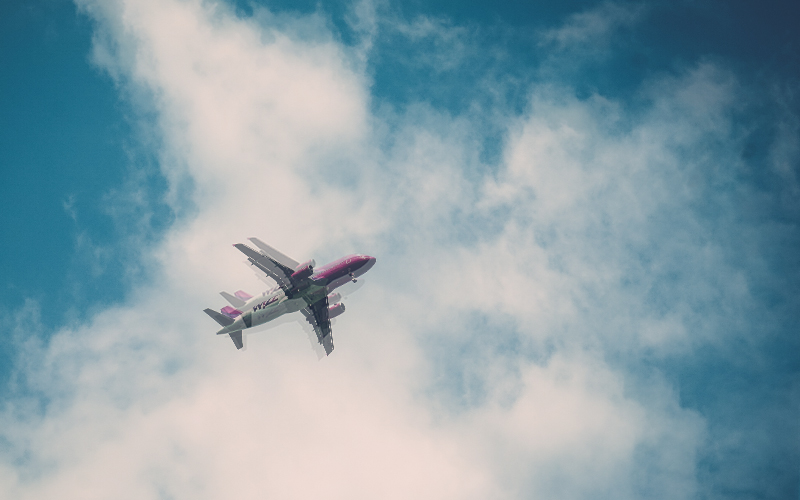
Picture this: You’ve boarded your flight, bound for a trip that’ll probably hold you buckled up by a seatbelt for the next eight hours or so. You feel a slight ‘eeekk’ and it’s not a rumble in the tummy. Your head spins a little and a moment of light-headedness brings on tunnel vision. You can feel an anxiety pang coming on.
Then you start hyperventilating (or you may just think you are)… your hands reach into the seat pocket in front of you and you need to make a quick decision: Do you bury your entire head in the airsickness bag, which would mean enveloping your senses in the odour that’s bound to be emitted in a while and make you sicker? Or make a mad dash to the lavatory while you still can, before the seatbelt sign is turned off?
For several years now, I’ve been experiencing motion sickness whenever I fly, and I can tell you that the fear of having whatever it is you ate pre-flight end up all over the passenger seated next to you is real. Here are my top tried-and-tested ‘must know, must not skip’ things to do before and during a flight to keep motion sickness in check:
1. Prepare the body mentally and physically

A couple of hours before my flight, I tire myself out with light exercises or lift a couple of weights, so that by the time I am airborne, I am ready to close my eyes to catch forty winks – and hope to stay asleep throughout the flight. An easy way to get the necessary pre-flight workout is to walk around the airport as much as possible. Forget taking the lifts or walkalator, stay on your feet.
2. Do not read, write or reach for the remote
In-flight entertainment, reading materials and jotting down notes are all no-no as soon as the seatbelt sign is off. If you have a window seat, just look out the window at the sky or search for the horizon. If you are seated in the middle or have an aisle seat, look straight ahead for as long as you can. This helps stabilise your gait and halts you from experiencing an onset of light headedness, dizzy spells or nausea. You may reach out for the remote console, start reading or scribbling once your head feels more at ease with cabin pressure and the surrounding activities that follow. I’d rather not do all these activities but listen to music or audio books.
3. Watch your in-flight meals: Say no to triggers

I almost never have large meals or anything greasy, spicy or acidic on board. For those who love a few drinks, you would be wise to avoid doing so because, as a diuretic, alcohol speeds up dehydration and can lower your body’s resistance to motion sickness. Steer clear of any noxious odours and other people who are experiencing any form of motion sickness. The best in-flight meals to take are foods that are light and subtle on flavours. Keep hydrated by drinking lots of room temperature water. A whiff of Tiger Balm or nutmeg balm may help, but be mindful of the person seated next to you who may not find the scent pleasant. If you want to use a balm, look for an all-natural one that contains generally accepted aromas such as lavender.
4. Get serious about air – fight to stay cool
I need air! Check the air vents; the air conditioner vent should be blowing cool and fresh air towards you and not away from you. I make it a point to bring a mini battery-operated fan with me on every flight just in case, which I can also use to keep myself cool during boarding when the air conditioning may not be turned on yet.
5. Keep a pill, a patch and a Psi band at hand

Before your next flight, see your GP. He or she will be able to prescribe you a combination of medication to keep airsickness or any type of motion sickness at bay. Usually, these will only help me a tad but never completely. There are also air sickness or acupressure wristbands that you can purchase over the counter at pharmacies. I swear by these and am especially hooked on the Psi band, which, when worn around the wrist helps manage and controls airsickness.
6. A little (cabin) yoga won’t get you feeling like a hangover
I breathe slowly, and take deep breaths, the kind that channel air all the way to your abdomen. At times, with all the breathing in and out, I feel as if I am about to go into labour with the help of a doula (professional modern day ‘midwives’ who provide physical, emotional and informational support to mothers before, during and just after birth) and I wonder if those around me think that I am! But this type of breathing helps me to relax and places my body and mind into a calmer state.
7. Ginger to the rescue

Keep a handful of ginger sweets in your bag. Ginger is known for its anti-nausea properties, and also helps with dispelling gas in the stomach. Just watch out for the burping!

